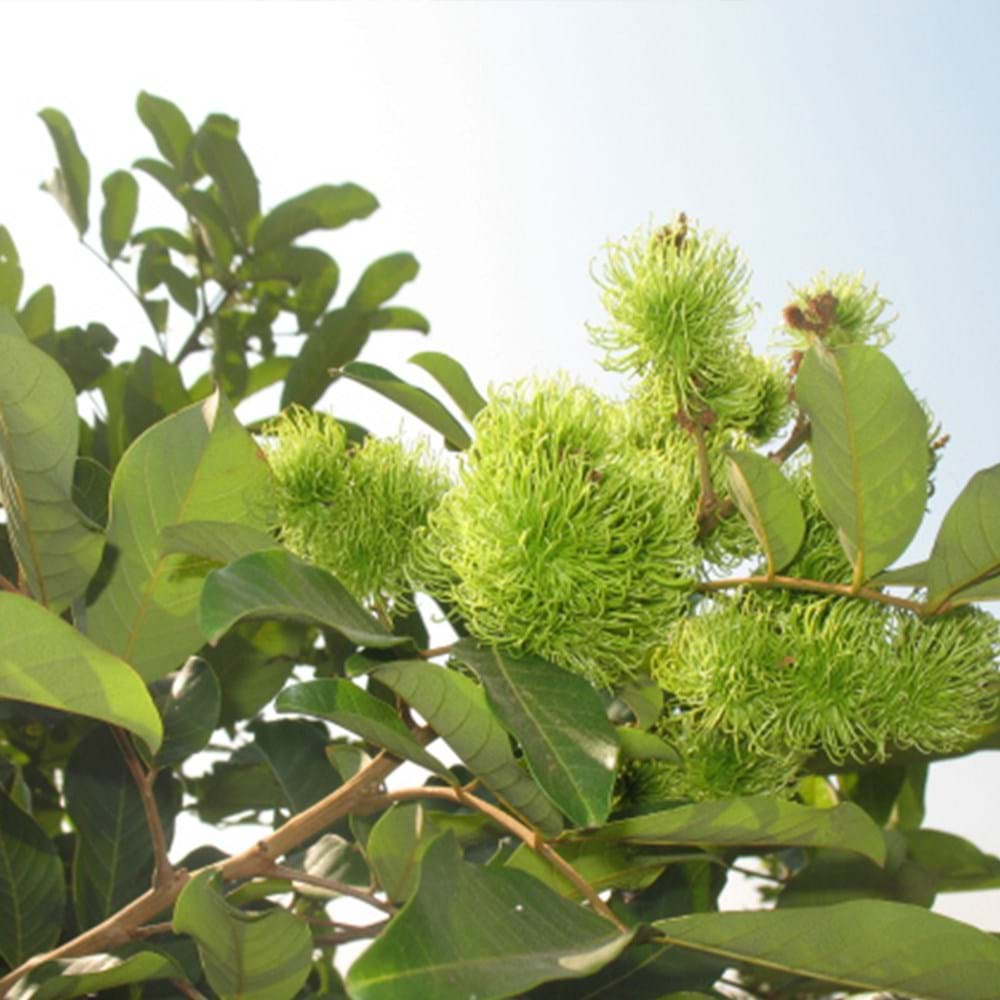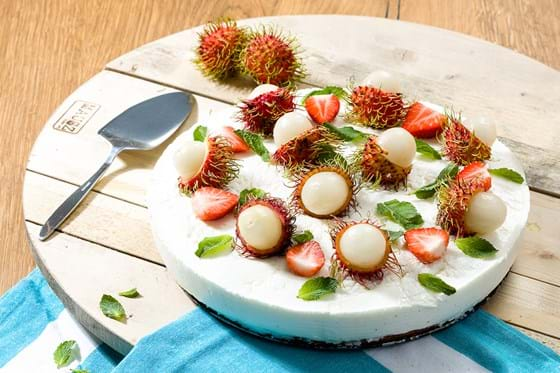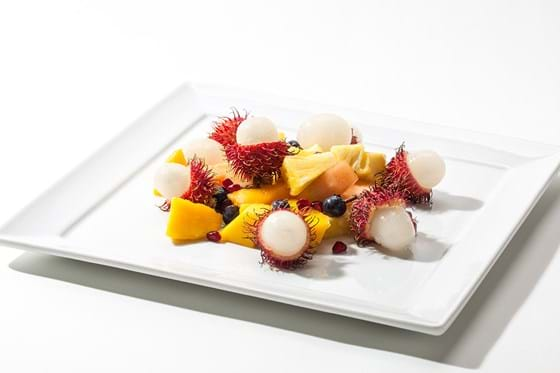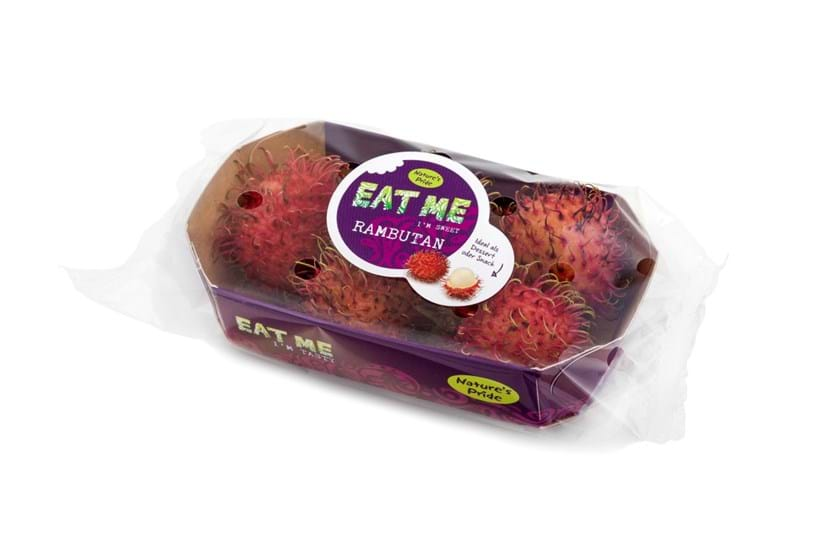Rambutan
Exotic looks, exotic taste
- Directly to...
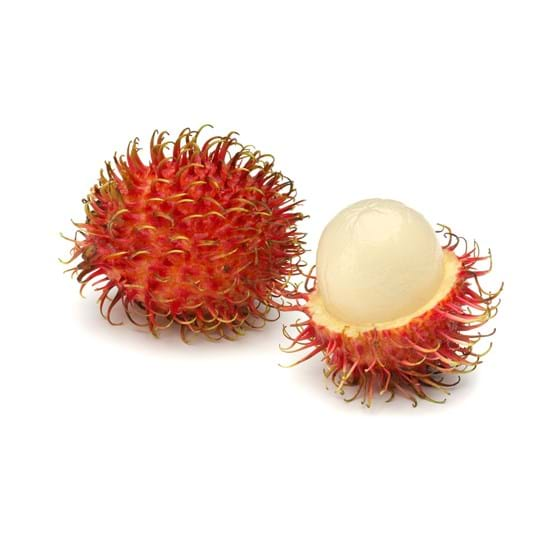
If this fruit reminds you of the lychee, then you are right. The rambutan is related to the lychee. However, it is quite different in appearance, with skin covered with soft, hairy green spikes. That gives the fruit its less flattering nickname: the hairy lychee. But in this case, the name says it all: rambutan is an Indonesian word that means hairy.
But don't let that stop you from trying the rambutan. The exotic exterior hides the tastiest flesh you've ever tasted. Bursting with juiciness. Beautifully sweet. The fruit is very popular in South-East Asia. The seed at the heart is not edible.
Recipes with rambutan
The ‘hairy lychee’ is perfect for plenty of surprising culinary experimentation. It can be marinated or partnered with raw ham. Prefer something a little safer but just a delicious? Give your summer fruit salad an extra boost with rambutan.
Preparation
Score all the way around the rambutan with a knife. The skin can then be removed from both halves. The large seed in the centre is not edible. The fruit tastes great in a salad or blended.
How to use rambutan in the kitchen?
- In salads
- As a snack
- In the blender
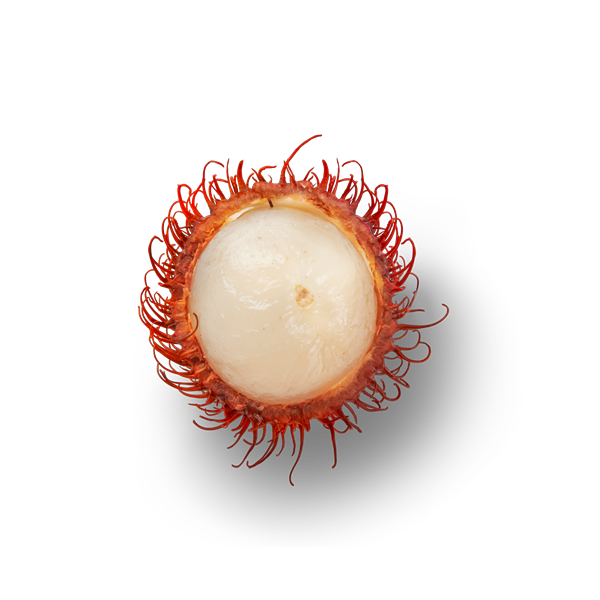

Storage advice
The best way to store rambutans is in the fridge.
Where do rambutans come from?
The rambutan is one of the most popular fruits in South-East Asia. That is where we source our EAT ME fruits. The fruit grows on trees that can reach up to 20 metres high. These trees do not produce fruit for the first 4 years. Rambutans grow in bunches. They are also harvested in bunches, to avoid damaging the fragile fruits.
